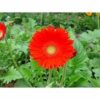**Fostering Positive Learning Environments with Marigold Flowers: Innovative Educational Approaches**

Marigold flowers offer a unique opportunity to create positive and enriching learning environments that stimulate curiosity, inspire creativity, and promote holistic development among students of all ages. With their vibrant colors, fragrant blooms, and versatile applications, marigolds serve as powerful educational tools that can enhance engagement, encourage exploration, and foster a deeper connection with nature. Let’s explore creative ways to integrate marigold flowers into educational settings to cultivate positive learning experiences and nurture a love for learning.
**1. Sensory Learning Stations: Engaging the Senses**
Marigold flowers can be incorporated into sensory learning stations designed to engage students’ senses and promote experiential learning. By setting up interactive stations with fresh marigold blooms, educators can encourage students to explore the flowers through sight, smell, touch, and even taste. Students can observe the vibrant colors of the petals, inhale the sweet fragrance, gently feel the velvety texture, and learn about the plant’s anatomy and lifecycle. Sensory learning with marigolds stimulates curiosity and enhances sensory awareness, providing a multisensory approach to learning that caters to diverse learning styles.
**2. Botanical Illustration and Art Projects: Cultivating Creativity**
Marigold flowers inspire botanical illustration and art projects that encourage students to express themselves creatively while learning about plant biology and natural history. By providing students with drawing materials and fresh marigold specimens, educators can guide them in creating detailed botanical sketches, watercolor paintings, or mixed-media collages inspired by the flowers. Students can observe the intricate patterns and structures of marigold blooms, capture their beauty on paper, and learn about the artistic techniques used in botanical art. Botanical illustration with marigolds fosters creativity, observation skills, and appreciation for the natural world.
**3. Garden-Based Learning: Cultivating Environmental Literacy**
Marigold flowers lend themselves to garden-based learning experiences that immerse students in hands-on activities related to plant cultivation, ecology, and environmental stewardship. By establishing school gardens or outdoor learning spaces with marigold plantings, educators can engage students in planting, tending, and harvesting the flowers while learning about soil health, pollination, and sustainable gardening practices. Students can observe the growth stages of marigold plants, investigate insect pollinators attracted to the flowers, and explore the interconnections between plants, animals, and the environment. Garden-based learning with marigolds fosters environmental literacy, horticultural skills, and a sense of responsibility for caring for living organisms.
**4. Storytelling and Nature Writing: Connecting with the Natural World**
Marigold flowers provide inspiration for storytelling and nature writing activities that encourage students to connect with the natural world and express their thoughts and observations through words. By inviting students to observe marigold plants in outdoor settings and reflect on their experiences, educators can facilitate creative writing prompts, nature journaling exercises, or storytelling sessions centered around the flowers. Students can describe the colors, scents, and textures of marigolds, invent stories about the plants’ origins or cultural significance, and share their personal connections to nature. Storytelling and nature writing with marigolds promote language development, imagination, and emotional expression.
**5. Environmental Projects and Community Engagement: Taking Action for Change**
Marigold flowers can inspire environmental projects and community engagement initiatives that empower students to take action for positive change in their local communities. By involving students in projects such as beautifying school grounds with marigold plantings, organizing community clean-up events, or raising awareness about environmental issues, educators can instill a sense of environmental responsibility and civic engagement. Students can learn about the importance of biodiversity, conservation, and sustainable living practices while making tangible contributions to their communities. Environmental projects with marigolds foster leadership skills, teamwork, and a sense of agency in addressing real-world challenges.
**6. Mindfulness and Wellness Activities: Promoting Mental Health**
In conclusion, marigold flowers offer endless possibilities for creating positive learning environments that foster curiosity, creativity, and connection with nature. By integrating marigolds into sensory learning stations, art projects, garden-based learning experiences, storytelling activities, environmental projects, and mindfulness practices, educators can inspire students to engage with their surroundings, cultivate a love for learning, and develop a deeper appreciation for the natural world. Through innovative educational approaches with marigolds, we can nurture students’ holistic development, promote environmental literacy, and empower them to become stewards of the planet.

